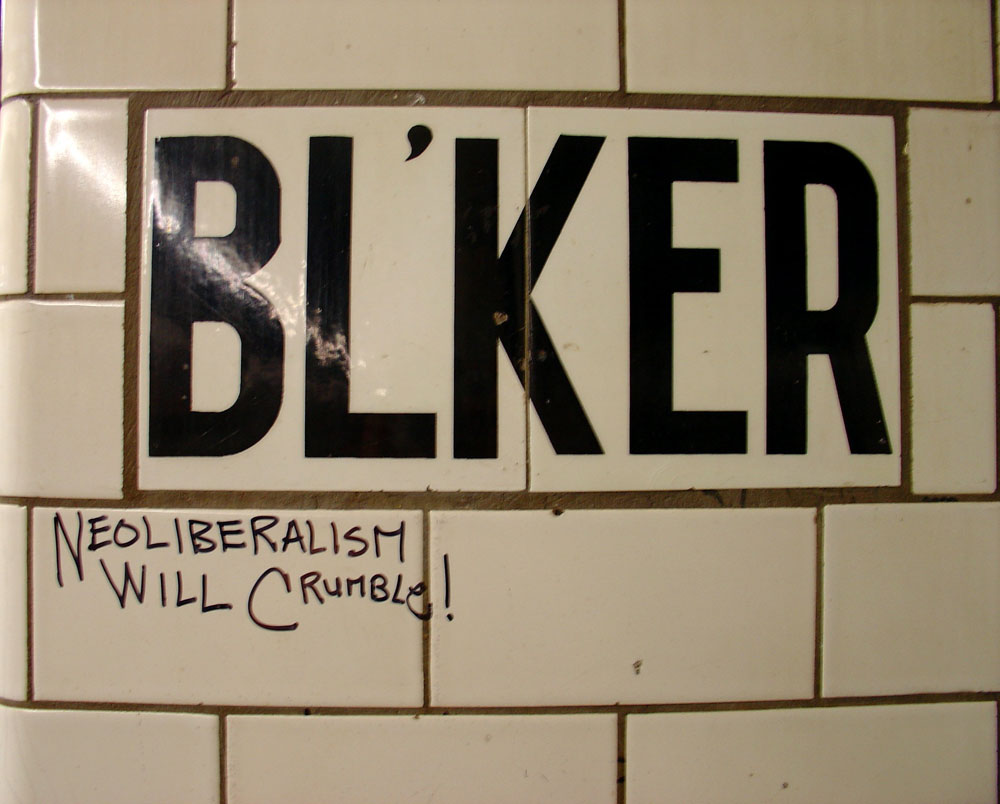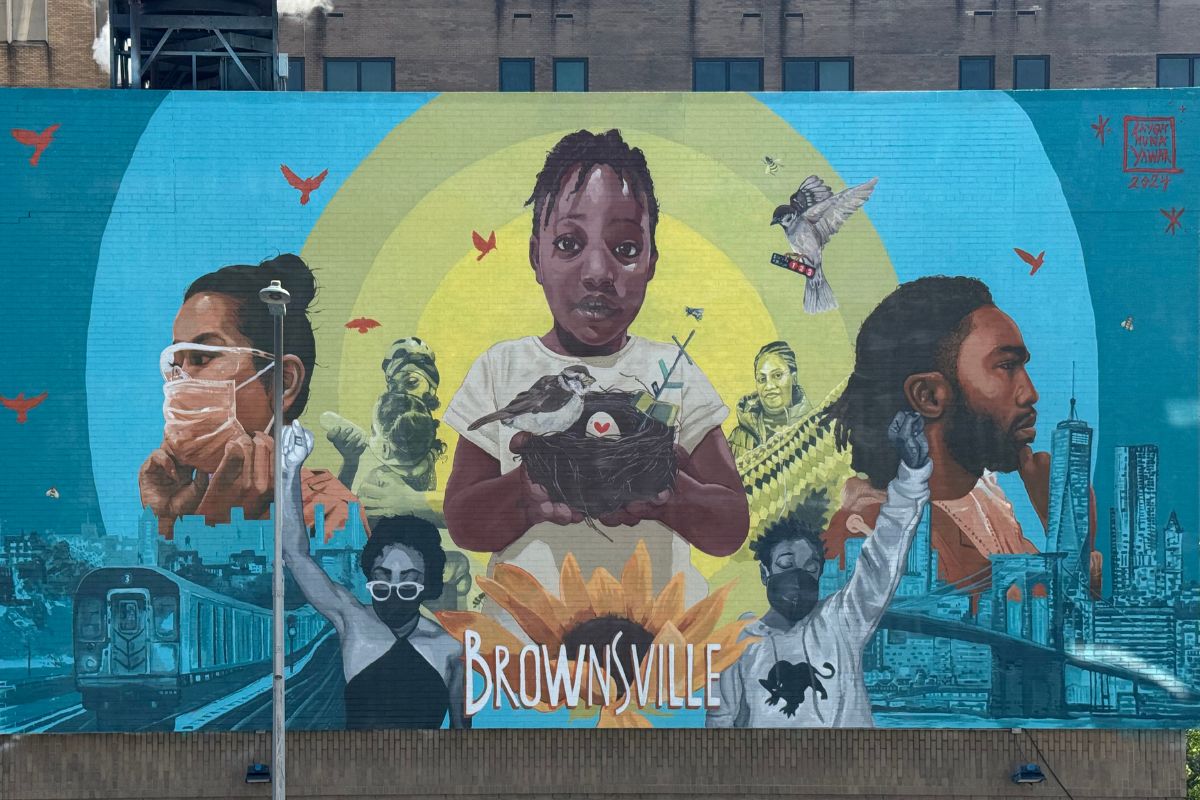

The economy, we are told, is booming—a message coming from self-serving politicians to be sure, but also from many who claim to be serious economic analysts. The Dow Jones Industrial Average, as we know, has topped 29,000 (can Dow 36,000 finally be on the way?) and we are in the midst of the longest economic expansion in US history. Yet the economic unease that is so pervasive right now should tell us something. If this is how the economy feels in “up” times, how scary will it be when—not if—the next recession occurs?
In NPQ, we have outlined some reasons for today’s economic anxiety, such as the nation’s $1.6 trillion student debt overhang. Also, communities of color still have not recovered from the loss of over a trillion dollars of household wealth in the Great Recession. Today’s economic problems—including that student debt burden and a growing homeownership gap between black and white, and young and old—can often trace themselves to the dominant approach to economic policymaking the past four decades, known as neoliberalism.
The famed Marxist economist David Harvey defines neoliberalism as a set “of political economic practices that proposes that human well-being can best be advanced by liberating individual entrepreneurial freedoms and skills within an institutional framework characterized by strong private property rights, free markets, and free trade.” Privatization and “deregulation” (better said, corporate-favoring regulation) are also central tenets, as is reduced funding for public goods and services, such as higher education (hence that $1.6 trillion debt). Margaret Thatcher and Ronald Reagan are identified with the approach, although centrists such as Tony Blair and Bill Clinton also embraced many of its key features. In the corporate world, there is a matching ideology of shareholder value maximization, which contends that businesses have few obligations beyond legal compliance and earning profits.
These days, neoliberalism is in tatters. In fact, we know the exact day its demise began: September 15, 2008, the day Lehman Brothers went under. Neoliberalism did not end that September, but the crash exposed the vacuity of so many economics assumptions.
After Lehman, sure, one can continue to pretend there is a free market. But, really? Yep, it must be the “free market” that explains why the Federal Reserve spent $4.5 trillion—in other words, close to $14,000 per person—on “quantitative easing” (pumping money into the economy) in the years after the Lehman Brothers bankruptcy to shore up corporate balance sheets. The invisible hand has rarely been so conspicuously visible.
Nonetheless, many would prefer to act as if nothing happened. The “zombie doctrine staggers on,” observed the British social critic George Manbiot in a 2016 book titled How Did We Get Into This Mess? in an excerpt published in the Guardian.
Meanwhile, for an economy that is allegedly operating on all cylinders, something is clearly awry. This is glaringly obvious to so many in the nonprofit sector who must deal with the collateral damage on a daily basis. At NPQ, as we’ve noted often, we are now firmly ensconced in a second gilded age of record inequality. But it is more than that.
Who ever heard of an economic expansion that—until a slight recovery last year—had seen three consecutive years of declining life expectancy, to say nothing about the spectacular rise of deaths of despair? And why do we see the rise of a politics based on grievance if our economic times are so good?
The answer is obvious: the good economic times are an illusion. As we noted at NPQ back in 2018, there has been a massive shift of income since 2008 from labor to capital. Regardless of how you slice the numbers, “massive” means a shift of several hundred billion dollars a year—a real loss of income for working families in the several thousand dollars a year per family range. This means tens of millions struggle economically, even if official unemployment rates are low.
This shows up in what Annie Lowrey in the Atlantic calls an “affordability crisis” but which could just as easily be called an “earnings crisis.” But regardless of whether people earn too little or necessities cost too much, the effect is much the same.
As Lowrey explains, it is because earnings don’t cover costs that roughly two in five US adults would struggle to come up with $400 in an emergency, why one in five adults is unable to pay the current month’s bills in full, and “why a surprise furnace-repair bill, parking ticket, court fee, or medical expense remains ruinous for so many American families, despite all the wealth this country has generated.” One third of all US households, Lowrey notes, are “financially fragile.” Living paycheck to paycheck, we observed last year, has disturbingly become the new normal.
The question remains: What to do? There are many options. Not long ago, the Nobel Prize winning economist Joseph Stiglitz published an op-ed in Common Dreams, called, appropriately enough, “After Neoliberalism.” Last December, The Nation published a book excerpt by Vanderbilt law professor Ganesh Sitaraman, whose article bore the same title. Then, there is the Next System Project of the Democracy Collaborative, which has published many proposals.
The number of policy alternatives can be dizzying, in fact. A Roosevelt Institute report, authored by its executive director Felicia Wong, titled The Emerging Worldview: How New Progressivism Is Moving Beyond Neoliberalism tries to sort through some of this.
In Wong’s formulation, there are four kinds of economic critiques that inhabit, broadly speaking, what one might call the left-liberal policy thinktank space. There are many disadvantages of limiting analysis to thinktanks—to say the obvious, more far-reaching, and likely needed, alternatives such as a nonprofit economy, a social solidarity economy or an economy based on norms of reciprocity remain out of the picture. Still, Wong’s analysis helps explain what is behind many policies floated by Democratic candidates for president, particularly those on the so-called “progressive wing”—namely, senators Elizabeth Warren and Bernie Sanders.
Wong outlines the four tendencies as follows:
Sign up for our free newsletters
Subscribe to NPQ's newsletters to have our top stories delivered directly to your inbox.
By signing up, you agree to our privacy policy and terms of use, and to receive messages from NPQ and our partners.
- New structuralists: a focus on higher taxes on the wealthy, anti-trust, and regulation.
- Public providers: a focus on expanding the provision of public services and public goods.
- Economic transformers: industrial policy–think Green New Deal.
- Economic democratists: a focus on building institutions, such as unions and worker co-ops.
From these tendencies and proposals, can “transformative, structural change” be had? A lot depends on how much value one wants to assign to such words as “transformative” and “structural,” but Wong contends that the policy thinking behind the current presidential campaigns of senators Warren and Sanders illustrates some possibilities.
Using her typology, Wong places Warren and Sanders in different boxes, with Warren aligning more with the structuralist and industrial policy goals, while Sanders aligns more with the public provisioning and democratizing aspects.
In other words, Warren leans heavily on tax, regulatory, antitrust, and public investment—tools that, typically, do not alter ownership of economic assets, but instead use government to reduce the political power of economic actors. By contrast, Sanders focuses more explicitly on shifting ownership—either from the private sector to the public sector or from the private sector to cooperatives or other community-based forms of ownership.
In short, in answer to the common question of what does “democratic socialism” mean to Sanders, Wong would say he means an economy that expands the public provision of services and enables economic democracy at the local level. Of course, the different strands of progressive politics overlap. For instance, Sanders endorses the Green New Deal and Warren endorses greater public services like Medicare for All.
Wong’s typology is far from perfect. But her analysis does remind us that the debate between such policy alternatives as regulation, antitrust, and public ownership is not a new one. As University of Michigan law professor Daniel Crane observed in an academic journal article, way back in the 1912 presidential contest, only two candidates “the conservative Taft and the progressive Wilson” favored antitrust. “The two other candidates—Roosevelt and Debs—favored either regulation taking the place of antitrust or complete nationalization of industry.”
Wong, in her report, however, is hoping these different strands might come together as elements of a unified economic policy alternative approach that can supersede neoliberalism. Broadly speaking, Wong outlines this agenda as follows:
From the structuralists
- Active anti-monopoly (antitrust) policy
- Higher taxes on the rich
- Restrictions on stock buybacks
- Worker representation on corporate boards (codetermination)
From the public provider advocates
- Public childcare and paid parental leave
- Medicare for All
- Free or low-cost college
- Affordable housing
- Access to broadband
- Access to prescription drugs
- Job guarantee
From the economic transformers
- Public investment
- Green New Deal
From the democratizers
- Participatory budgeting
- Federal Reserve transparency
- Support for unions
- Support for cooperatives
- Support for worker and community ownership
In Wong’s optimistic take, “A coherent post-neoliberal progressive worldview is taking shape” (p. 46). Alas, there may be rather less coherence than Wong suggests.
Wong does acknowledge two areas of tension. One is whether to favor centralized or decentralized government. As Wong puts the question, “Are our existing challenges—economic insecurity, racial inequality, climate change—best addressed through the coordinated action of a strong state or by devolution to local ownership and local control?” (p. 42). The second tension Wong identifies is the balance between technical expertise and democratic empowerment.
Wong also lifts up another major obstacle: continued US racial and gender inequality. “Perhaps the most difficult challenge is whether a new progressive worldview can effectively embrace, in practical everyday life, a multiracial ‘demos,’ and one that includes all genders in our economic life,” Wong writes (p. 46).
Still, other major hurdles go largely unremarked. One key question is whether the policies proposed would succeed in reining in wealth inequality. A central question of any economic system is “For whose benefit?” A century ago, US public policy largely rejected public ownership in favor of breaking up large corporations while otherwise leaving economic power in private hands, a policy approach that failed to limit inequality until the Great Depression and World War II forced larger structural changes (such as expanded unions and progressive taxation). An ownership approach, by contrast, directly changes the answer to the “for whose benefit” question in a way that antitrust and regulation do not.
Another challenge is to move beyond the thinktank box. Notably, Wong does not consider proposals emanating from social movements, such as the Movement for Black Lives’ extensive platform. This may be an oversight, but, if so, it is an enormously consequential one, since social movements frequently are election altering. It is also the case that social movements more often push thinktanks to take on new positions rather than the other way around. For example, the issue of reparations, would not exist on the policy agenda but for the activism of Black Lives Matter and its allies.
A third challenge is the need to develop a theory of the economy itself, outside the realm of government. The mid-20th century economy, for example, was dominated by mass manufacturing, unionized firms. Today’s economy in the US is largely nonunion and service, extraction, and technology based. In this regard, how the Green New Deal is structured is critical. Put plainly, the Green New Deal could favor democratic ownership—or it could reinforce inequality. It is not just important to develop a Green New Deal, but to develop one, as Subin DeVar reminds us in NPQ, that fosters genuine social transformation.
Building even elements of a new economic model is no small matter. Indeed, overcoming inertia might be one of the toughest challenges of all. In an article titled “An Economic Bill of Rights for the 21st Century,” published in The American Prospect last year, William Darity, Darrick Hamilton, and Mark Paul observe that, “Despite the vast gulf between the two major political parties on many issues, on fundamentals both have adhered to a neoliberal agenda of deregulation, reliance on market-based solutions to our social problems, and a devolution of the role of government in ensuring and enforcing Americans’ right to a decent standard of living, economic dignity and economic mobility” (reproduced in Wong, p. 18).
Wong acknowledges the difficult path ahead. Whether a new economic paradigm displaces neoliberalism, she contends, depends on the ability to “make common cause” (p. 47). Wong’s effort at synthesis is admirable, yet it remains unsatisfying.
The data, research, policy proposals, and narrative approaches that Wong points to are important, but are unlikely to bring about a shift in economic approach by themselves. In all likelihood, transformative change will involve economic pain, social movement mobilization, and conflict as well. More than a century ago, the former slave and abolitionist Frederick Douglass noted, “If there is no struggle, there is no progress.” It is a message that is worth bearing in mind. The path to a new economic system is surely a necessary one to travel, but it won’t be easy.











